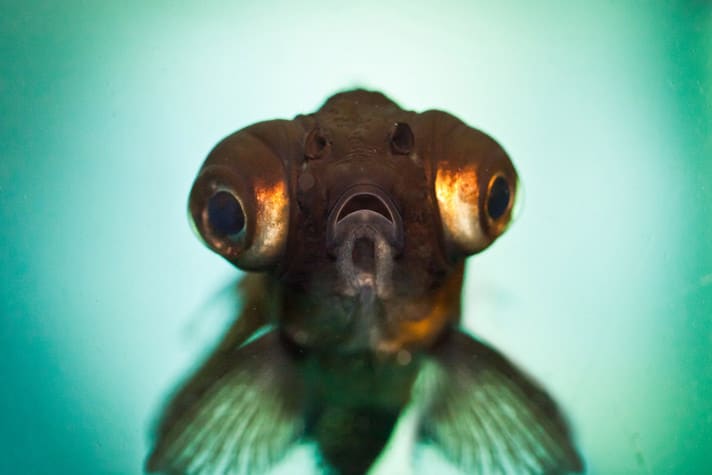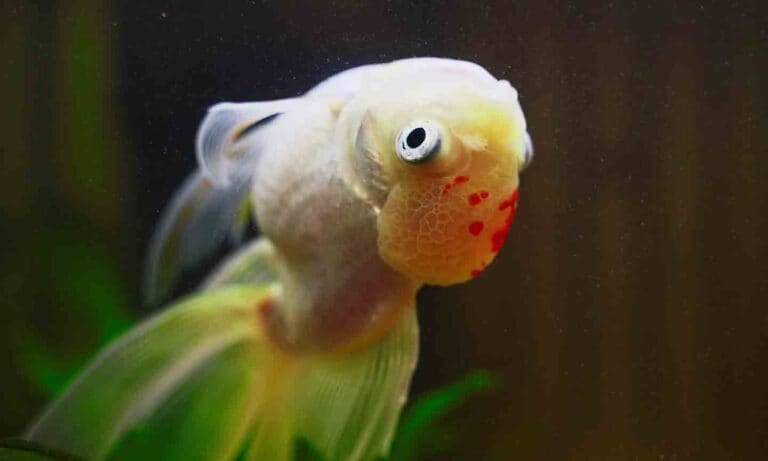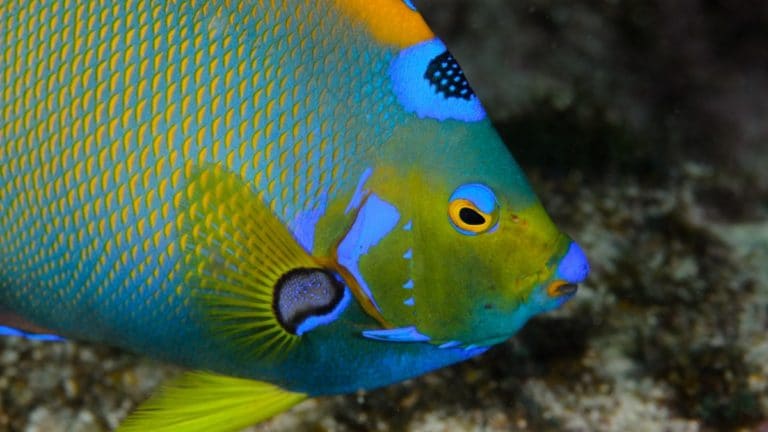Despite its name, mouth fungus in aquarium fish is in fact a bacterial infection, and needs to be treated with antibiotic or antibacterial medications.
Identification
Mouth fungus is most commonly associated with the head, though not exclusively the mouth. It may affect the face and gills as well as the jaws. Less frequently, it can also affect the body and fins, and as such may be easily confused with finrot. Nonetheless, the short tufts that are typical of mouth fungus infections are distinctive. True fungal infections are similar, but whereas fungal infections tend to be visible as tufts of long, white, rather fluffy threads similar to cotton wool, mouth fungus infections tend to be off-white to grey in color. Confusingly, some aquarists refer to mouth fungus as “cotton wool disease,” despite the more cottony appearance of true fungal infections.
Advanced cases of mouth fungus can also produce nasty-looking sores and lesions on the head and along the flanks.
Pathology
Mouth fungus is caused by a rod-shaped, gram-negative bacterium species called Flavobacterium columnare, in the past known as Flexibacter columnaris, hence the alternative common name for this disease, “columnaris.”
Triggering Factors
Like the bacteria that cause finrot, mouth fungus bacteria are present in all aquaria and normally do no harm. In fact they play a part in the biological filtration process by breaking down organic material (such as fish feces) into inorganic chemicals that the biological filter bacteria can process. But just as with finrot bacteria, mouth fungus bacteria are opportunistic, and will readily feed on living cells and tissue fluid given the chance.
When fish are injured, for example by fighting or fin-nipping, their skin is broken and bacteria will enter the wound. Ordinarily the fish’s immune system will destroy any invading bacteria, preventing disease, but if the fish’s immune system is weakened through stress, poor diet, or most commonly of all, poor environmental conditions, the invading bacteria are able to establish themselves inside the wound. Therefore whenever mouth fungus appears, the aquarist should check the fish aren’t fighting or nipping each other, that all the fish are being maintained in appropriate social groups, that their diet is balanced and vitamin-rich, and that water quality is satisfactory. Non-zero levels of ammonia and nitrite are particularly strongly associated with mouth fungus, though water chemistry and oxygen concentration issues may also be at issue.
Compared to finrot, mouth fungus tends to develop slowly, but certain strains act very much faster than the standard sort, and these can potentially kill infected fish within a few days. Prompt diagnosis and treatment is therefore critical.
Treatment
Antibiotics that act against gram-negative bacteria, such as kanamycin, should work well against mouth fungus. Antibacterial medications such as phenoxyethanol (at 100 mg/l, for 7 days) and nifurpirinol (also known as furanace or nitrofurazone, 0.2 mg/l, for up to 5 days) have also been used with success. Note that some of these medications, including nifurpirinol, can affect the filter bacteria.
Because it can be difficult to distinguish mouth fungus from both true fungal infections and bacterial finrot, many proprietary medications formulated to treat mouth fungus also treat finrot and fungus as well. Needless to say, success in the long term depends upon the fish being properly maintained, so some review of water quality, water chemistry, diet, and social behavior will very likely be necessary.
Tea-Tree Oil and Salt
Tea-tree oil from Melaleuca tree species has been used to prevent bacterial infections of fish with some degree of success. If a fish has been damaged or nipped, isolating that fish from the source of trouble and then treating with tea-tree oil may be helpful in preventing both mouth fungus and finrot, as well as true fungal infections.
Salt (sodium chloride) is not particularly useful in treating mouth fungus, though it may have some value in preventing bacterial infections generally when used at a dose of up to 1 oz per US gallon. Note however that salt concentrations likely to prevent bacterial infections will be too high for most freshwater fish, making salt only useful in situations involving truly salt-tolerant fish, such as guppies and mollies.
Prevention
Mouth fungus is not usually seen in well-managed aquaria, and is much more typical of aquariums with seriously management and/or stocking problems. So the best way to prevent mouth fungus is to ensure your aquarium is correctly set-up, stocked, and maintained. This entails proper cycling of the aquarium before fish are added, careful selection of fish species that share the same requirements in terms of water chemistry and temperature, and that their social behavior is correctly managed as well. Fighting, for example, is an easy way for fish to damage themselves, and in doing so, allow mouth fungus to become a problem. This is particularly true with cichlid fish that like to “wrestle” with their jaws. Keeping livebearers in soft, acidic water is another easy way to get mouth fungus into your aquarium, as is keeping tropical fish such as bettas in an unheated aquarium. Goldfish most commonly become infected when kept in unfiltered or overstocked aquaria.
Posted by: Chewy Editorial
Featured Image: via Benson Kua/Flickr
Share:









